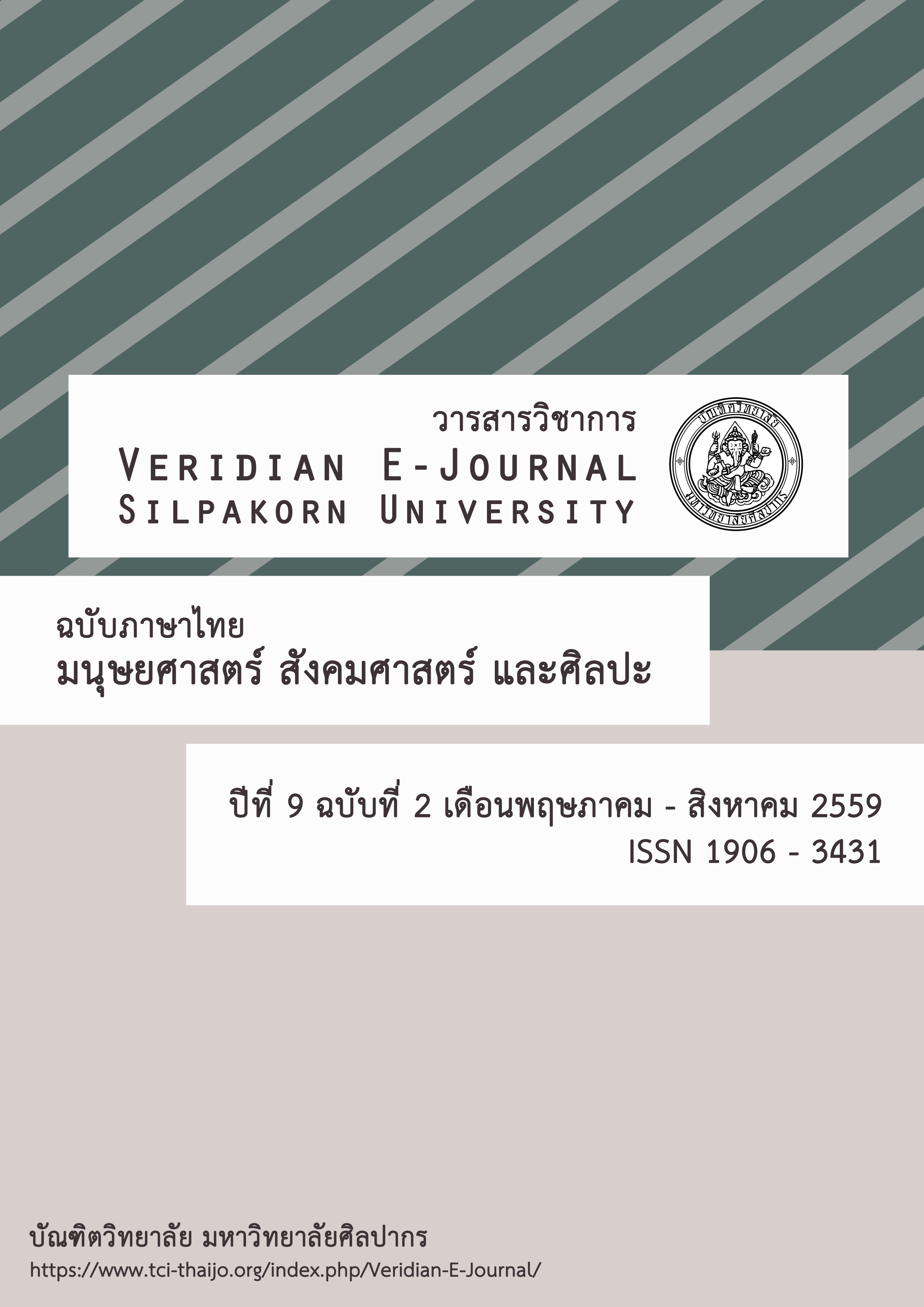จากปี่ในสู่ปี่นอก
Main Article Content
Abstract
งานวิจัยเรื่อง พระอภัยมณี : การดัดแปลงดนตรีจากวรรณกรรมไทยสำหรับวงคลาริเน็ต เป็นการสร้างบทประพันธ์เพลงร่วมสมัยสำหรับวงคลาริเน็ต โดยนำองค์ประกอบทางดนตรีมาจากการศึกษาวิจัยเรื่องปี่แน ซึ่งเป็นเครื่องดนตรีประจำภูมิภาคทางตอนเหนือของประเทศไทย และเป็นถิ่นกำเนิดของผู้วิจัย และเนื่องจากปี่เป็นเครื่องดนตรีเอกในวรรณกรรมไทยเรื่องพระอภัยมณี ผู้วิจัยจึงได้นำเนื้อเรื่องตอน พระอภัยมณีและศรีสุวรรณเรียนวิชา มาเป็นโครงสร้างหลักของบทประพันธ์ และใช้การศึกษาวิจัยปี่แนในวงดนตรีล้านนา ในด้านรูปแบบการบรรเลง เทคนิคต่างๆ ตลอดจนวิธีการสืบทอดการบรรเลงปี่แน มาเป็นองค์ประกอบทางดนตรี โดยนำมาประยุกต์เข้ากับการบรรเลงคลาริเน็ต นำมาซึ่งสีสันของเสียงแบบใหม่ที่ประสมประสานให้เข้ากับเทคนิคการประพันธ์เพลงที่ใช้การผสมเสียงอะคูสติกกับดนตรีอิเล็กทรอนิกส์ นับเป็นการเพิ่มมิติทางเสียงดนตรี
แต่เนื่องด้วยลักษณะทางกายภาพและระบบเสียงของปี่แนและคลาริเน็ตมีความแตกต่างค่อนข้างมาก ทำให้ผู้วิจัยต้องนำเทคนิคของดนตรีอิเล็กทรอนิกส์มาประยุกต์ใช้ในการประพันธ์เพลงเพื่อชดเชยข้อจำกัดที่ คลาริเน็ตไม่สามารถทำได้ และเป็นการสร้างเทคนิคใหม่ๆ ในการบรรเลงคลาริเน็ต ตลอดจนช่วยพัฒนาทักษะในการบรรเลงของนักคลาริเน็ตผลของการวิจัยนี้สามารถนำไปเป็นแนวคิดใหม่ให้กับการสร้างสรรค์บทประพันธ์และงานวิจัยอื่นๆ ต่อไป
Phra Apaimanee: Musical Adaptation of a Thai Epic for Clarinet Ensemble is a research aiming for creating a contemporary composition based on the study of the northern folk oboe, “Pii Nae,” an instrument drawn from the researcher’s birthplace. As “Pii” is the instrument associated with one of the most famous pieces of Thai literature,“Phra Apaimanee,” the researcher has adopted the first episode of that story, a scene of “the Study of Phra Apaimanee and Srisuwan,” as the composition’s framework. The sound of “Pii Nae” in the Lanna ensemble has become a source for this research in studying its stylistic practices, performance techniques, and learning methods, along with the attempt to apply these principles to clarinet performance practice. Hence, the result of the “Pii Nae” research is transferred into the sound system of clarinet, creating a new timbre for this instrument that goes along with the electro-acoustic composition techniques, initiating a new musical dimension.
However, “Pii Nae” and clarinet are different in their sound system, physical body, and sound projections, therefore, some of Pii Nae’s techniques are limited when played on clarinet. As such, those techniques are employed with the application of electronic music techniques instead. Consequently, it has brought new techniques to clarinet performance, improving the skill of the clarinetist, and becoming a new source of ideas for further creative research.

